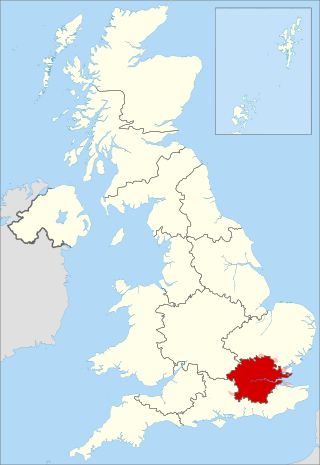Related Research Articles

ITV1 is a British free-to-air public broadcast television channel owned and operated by the British media company ITV plc. It provides the Channel 3 public broadcast service across all of the United Kingdom except for the central and northern areas of Scotland where STV provides the service.

Carlton Television was the ITV franchise holder for London and the surrounding counties from 9.25am every Monday to 5.15pm every Friday. The company is now managed with London Weekend Television as a single entity, but the two companies are still separately licensed. The station is owned and operated by ITV plc under the licensee of "ITV Broadcasting Limited". Carlton has been branded on air as "ITV1" since 28 October 2002. Carlton Television Ltd, the original holder of the licence, has since been dissolved. Carlton UK Television Limited however is now known as ITV Consumer Limited and legally operates ITV plc's websites. As Carlton's name has no relation to its region, its on-screen identity has been completely removed. Other regions have kept their original company name as a region name and in their local news name.

ITV Yorkshire, previously known as Yorkshire Television and commonly referred to as just YTV, is the British television service provided by ITV Broadcasting Limited for the Yorkshire franchise area on the ITV network. Until 1974, this was primarily the historic county of Yorkshire and parts of neighbouring counties served by the Emley Moor transmitter. Following a reorganisation in 1974 the transmission area was extended to include Lincolnshire, northwestern Norfolk and parts of Derbyshire and Nottinghamshire, served by the Belmont transmitter.

ITV plc is a British media company that holds 13 of the 15 regional television licences that make up the ITV network, the oldest and largest commercial terrestrial television network in the United Kingdom.

ITV Meridian is the holder of the ITV franchise for the South and South East of England. The station was launched at 12:00 am on 1 January 1993, replacing previous broadcaster Television South, and is owned and operated by ITV plc, under the licensee of ITV Broadcasting Limited. Meridian Broadcasting Ltd was one of several ITV plc-owned regional companies to have its legal name changed on 29 December 2006, when it became ITV Meridian Ltd. This company is, along with most other regional companies owned by ITV plc, listed with Companies House as a "Dormant company".
The history of ITV, the United Kingdom and Crown Dependencies "Independent Television" commercial network, goes back to 1955.
Connections is a British game show, devised and produced by John Huntley, that aired on ITV from 26 April 1985 to 6 July 1990. The daytime version is hosted by Sue Robbie from 1985 to 1988 and Simon Potter from 1989 to 1990, while the primetime version is hosted by Richard Madeley.
Night Network, Night Time and Night Shift were names given to the overnight schedule of the ITV network in the United Kingdom. The first ITV company began 24-hour broadcasting in 1986, with all of the companies broadcasting through the night by the end of 1988. At first, individual companies created their own services; however, before too long, many of the smaller ITV stations began simulcasting or networking services from others.

Yorkshire-Tyne Tees Television was a British broadcasting company, which is now part of ITV plc.
The ITV television network in the United Kingdom began as a group of regional stations, each with their own identities. Each station used its own idents to create an individual identity.

ITV Wales and West, previously known as Harlech Television (HTV), was an ITV franchisee in the United Kingdom until 31 December 2013, licensed to broadcast by the regulator Ofcom.
In the 1960s and 1970s, an envisioned fourth UK television service was popularly referred to as ITV2, before the launch of Channel 4 in November 1982.
This is a timeline of the history of the British television network ITV.
This is a timeline of the history of the British broadcaster Yorkshire Television. It has provided the ITV service for Yorkshire since 1968.
This is a timeline of the history of the British broadcaster Meridian Broadcasting. It has provided the ITV service for the South and South East of England since 1993.
This is a timeline of the history of the British television service HTV West. "HTV West" and "ITV West" were the service names for the ITV service in the West of England from 1970 until 2009, after which the service name "ITV West Country" has been used across the West and South West of England. The "West" service was a sub-region of the franchise for Wales and the West.
This is a timeline of the history of regional news on the British television network ITV.
This is a timeline of overnight television broadcasting in the United Kingdom. It focuses on programming between midnight and 6am and includes details of when channels began into the night and 24-hour broadcasting.
References
- ↑ Crisis on 30-second street: The backroom boys who sell TV airtime Bell, Emily The Observer (1901–2003); 6 September 1992
- 1 2 3 "TV companies link up By". Times. London. 20 July 1993. p. 22.
- ↑ Central Independent Television plc. The Times, Thursday, 23 March 1989; pg. 37
- 1 2 "Wildscreen - About - Board of Trustees". Archived from the original on 2 December 2013. Retrieved 22 August 2013.
- 1 2 "HEADLINER: TSMS boss anticipates a life of honest toil at Zenith Media - Tim Wootton doesn't think he will miss the ITV sales scrum, Claire Beale claims".
- ↑ Crisis on 30-second street: The backroom boys who sell TV airtime ...Bell, Emily The Observer (1901–2003); 6 September 1992;
- ↑ Too much reward without risk. The Times, Friday, 4 March 1994; pg. 25
- ↑ Scottish Television shares slide after profit warning.Sarah Bagnall. The Times, Tuesday, 11 October 1994
- ↑ "History of Central Independent Television – FundingUniverse".
- ↑ Airtime sales fall hits HTV shares. Eric Reguly. The Times, Thursday, 6 March 1997; pg. 27
- ↑ Yorkshire TV plunges to loss of £7.9m. Susan Gilchrist. The Times, Saturday, 29 January 1994; pg. 21
- ↑ Scottish Television shares slide after profit warning. Sarah Bagnall. The Times. Tuesday, 11 October 1994
- ↑ Sales agency given warning by Yorkshire Tyne Tees TV. Eric Reguly. The Times. Wednesday, 4 September 1996
- ↑ Shake-up at Carlton to cost 180 jobs. Alexandra Frean, Media Correspondent. The Times. Wednesday, 7 September 1994
- ↑ Carlton captures SMG airtime sales: 100 job losses to go at TSMS after latest ITV skirmish Deans, Jason The Guardian (1959–2003); 26 October 2000